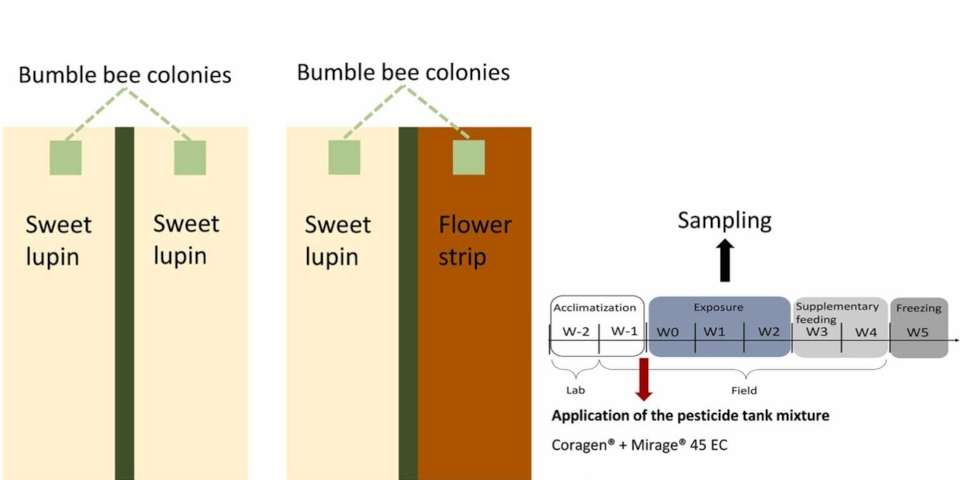Bumble bees are important pollinators of crops in the field and greenhouses. They are naturally exposed to a combination of interacting stressors, e.g., loss of flowering resources and exposure to plant protection products. Mass-flowering crops are important resources for bees, but they may result in unbalanced nutrition due to different nutritional values. In this study, a semi-field experiment was conducted to evaluate the response of Bombus terrestris colonies after the application of a tank mixture containing the insecticide chlorantraniliprole and the fungicide prochloraz, either in monofloral-managed lupin (Lupinus albus) as high pollen protein resource or in presence of an additional polyfloral flower mixture. Our results demonstrate an evident effect on worker mortality after application of the tank mixture. Higher worker mortality in polyfloral treatments compared to the untreated control was observed. The number of young brood and pupae in colonies in polyfloral control were significantly higher than in monofloral treatment. However, no long-term effects on the number or weight of new queens were found. Furthermore, flowering resources, but not pesticide exposure, affected colony weight. Exposure to the tank mixture resulted in declining nectar yeasts abundance and an increasing proportion of phylloplane yeasts in forager guts. In conclusion, diverse flowering resources are important for a bumble bee colony’s development. Even in a high pollen protein crop, low flower diversity may act as an additional stressor. Thus, we suggest further maintaining and promoting flowering strips or flowering fields in agricultural landscapes, even near high pollen protein crops, to enhance bee health.
2405 Members
127 Countries!
127 Countries!










